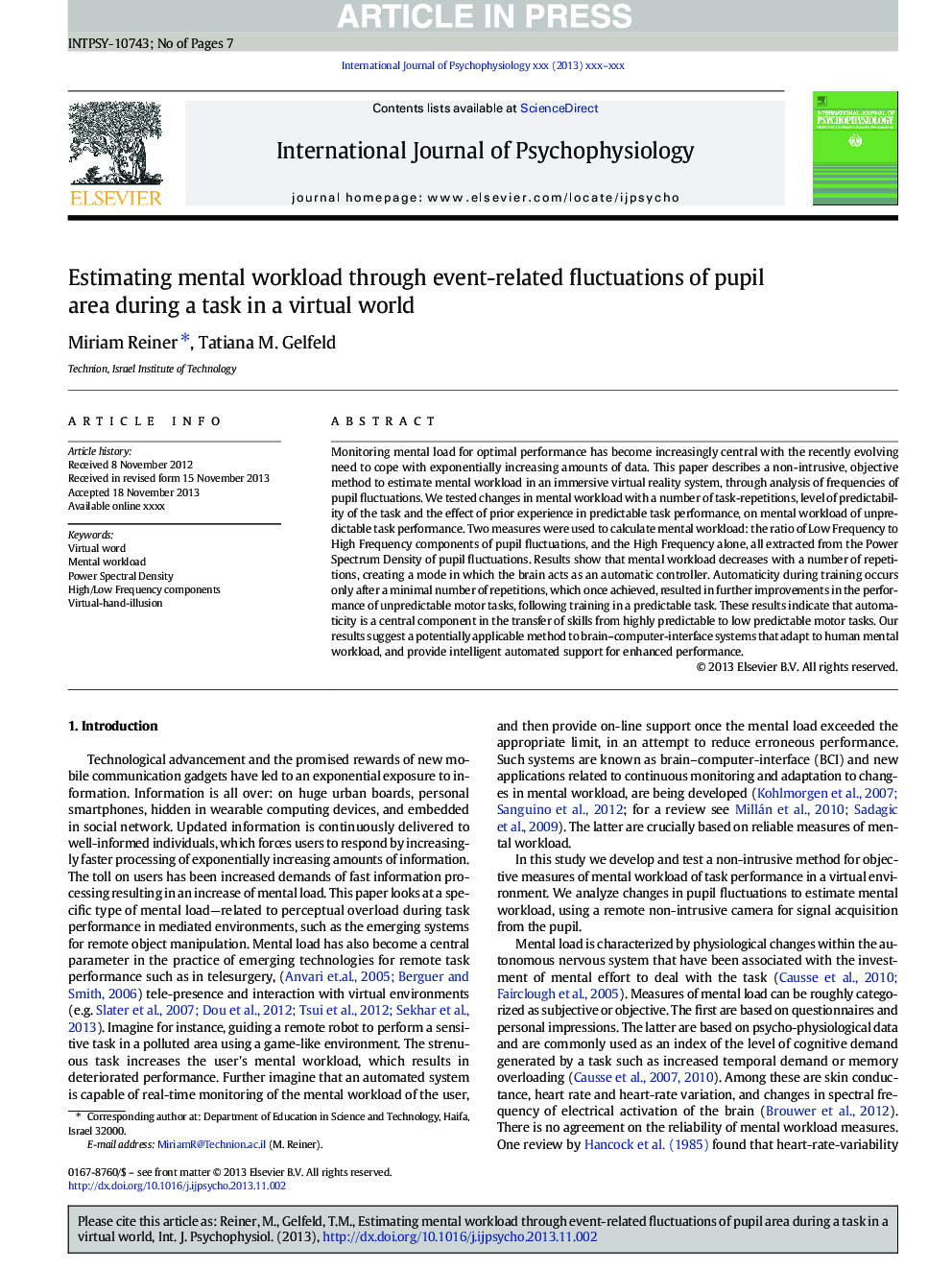| کد مقاله | کد نشریه | سال انتشار | مقاله انگلیسی | نسخه تمام متن |
|---|---|---|---|---|
| 7295681 | 1474417 | 2014 | 7 صفحه PDF | دانلود رایگان |
عنوان انگلیسی مقاله ISI
Estimating mental workload through event-related fluctuations of pupil area during a task in a virtual world
ترجمه فارسی عنوان
برآورد حجم کار ذهنی از طریق نوسانات مربوط به رویداد منطقه دانش آموز در طول یک کار در یک دنیای مجازی
دانلود مقاله + سفارش ترجمه
دانلود مقاله ISI انگلیسی
رایگان برای ایرانیان
کلمات کلیدی
کلمه مجازی، حجم کاری ذهنی، قدرت طیفی تراکم، اجزای فرکانس بالا / پایین، توهم مجازی دست،
موضوعات مرتبط
علوم زیستی و بیوفناوری
علم عصب شناسی
علوم اعصاب رفتاری
چکیده انگلیسی
Monitoring mental load for optimal performance has become increasingly central with the recently evolving need to cope with exponentially increasing amounts of data. This paper describes a non-intrusive, objective method to estimate mental workload in an immersive virtual reality system, through analysis of frequencies of pupil fluctuations. We tested changes in mental workload with a number of task-repetitions, level of predictability of the task and the effect of prior experience in predictable task performance, on mental workload of unpredictable task performance. Two measures were used to calculate mental workload: the ratio of Low Frequency to High Frequency components of pupil fluctuations, and the High Frequency alone, all extracted from the Power Spectrum Density of pupil fluctuations. Results show that mental workload decreases with a number of repetitions, creating a mode in which the brain acts as an automatic controller. Automaticity during training occurs only after a minimal number of repetitions, which once achieved, resulted in further improvements in the performance of unpredictable motor tasks, following training in a predictable task. These results indicate that automaticity is a central component in the transfer of skills from highly predictable to low predictable motor tasks. Our results suggest a potentially applicable method to brain-computer-interface systems that adapt to human mental workload, and provide intelligent automated support for enhanced performance.
ناشر
Database: Elsevier - ScienceDirect (ساینس دایرکت)
Journal: International Journal of Psychophysiology - Volume 93, Issue 1, July 2014, Pages 38-44
Journal: International Journal of Psychophysiology - Volume 93, Issue 1, July 2014, Pages 38-44
نویسندگان
Miriam Reiner, Tatiana M. Gelfeld,
